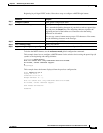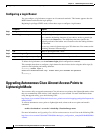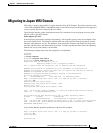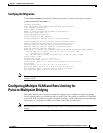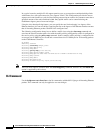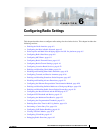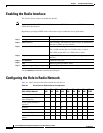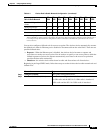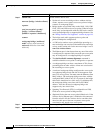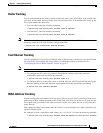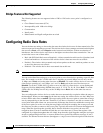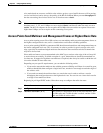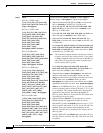
6-3
Cisco IOS Software Configuration Guide for Cisco Aironet Access Points
OL-29225-01
Chapter 6 Configuring Radio Settings
Configuring the Role in Radio Network
You can also configure a fallback role for root access points. The wireless device automatically assumes
the fallback role when its Ethernet port is disabled or disconnected from the wired LAN. There are two
possible fallback roles:
• Repeater—When the Ethernet port is disabled, the wireless device becomes a repeater and
associates to a nearby root access point. You do not have to specify a root access point to which the
fallback repeater associates; the repeater automatically associates to the root access point that
provides the best radio connectivity.
• Shutdown—the wireless device shuts down its radio and disassociates all client devices.
Beginning in privileged EXEC mode, follow these steps to set the wireless device radio network role and
fallback role:
Non-root bridge with wireless
clients
X–– XXXXXX
Workgroup bridge X X X X X X X X X
Universal workgroup bridge
1
X——XXXXXX
Scanner X XX X X XXXX
1. When configuring a universal workgroup bridge using AES-CCM TKIP, the non-root device should use only TKIP or
AES-CCM TKIP as ciphers in order to associate to the root device. The non-root device will not associate with the root if
it is configured only AES-CCM. This configuration results in a mismatch in the multicast cipher between the root and
non-root devices.
Table 6-1 Device Role in Radio Network Configuration (continued)
Role in Radio Network
AP
1040
AP
1100
AP
1130
AP
1140
AP
1200
AP
1240
AP
1250
AP
1260
1300
AP/BR
Command Purpose
Step 1
configure terminal Enter global configuration mode.
Step 2
interface dot11radio { 0 | 1 } Enter interface configuration mode for the radio interface:
2.4-GHz radio and the 802.11n 2.4-Ghz radio is interface 0.
5-GHz radio and the 802.11n 5-GHz radio is interface 1.



